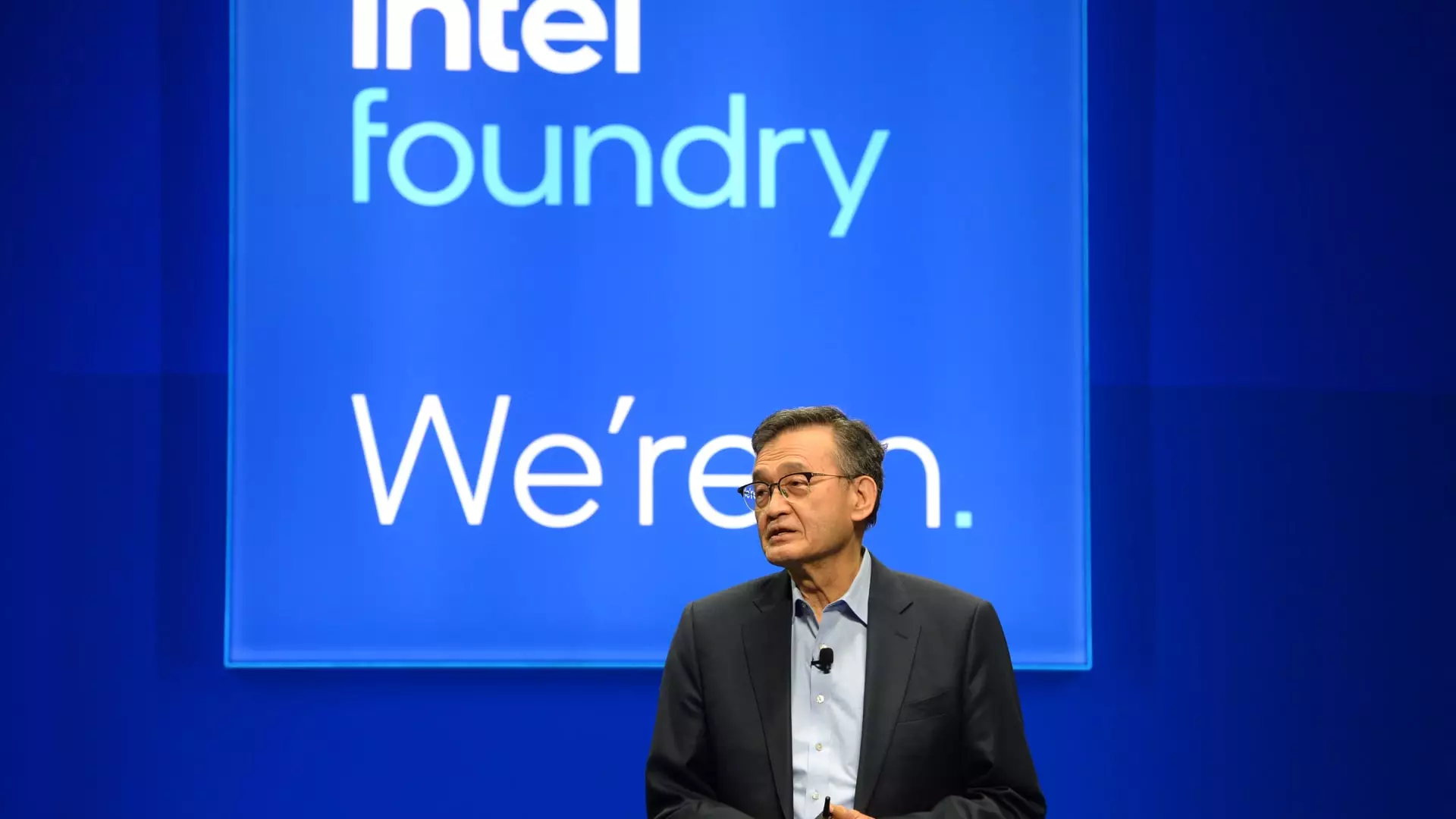Intel’s recent financial disclosures and strategic pivots reveal a company desperately clinging to echoes of past glory while stumbling over the harsh realities of today’s semiconductor industry. Despite a surprising earnings beat and optimistic sales forecasts, the core concern remains pervasive: Can Intel-ever truly rebound without a clear, confident vision for its manufacturing future? The markets responded sharply, with its shares plummeting over 8%, a stark reminder that investor faith is fragile and tied intimately to perception—not just the numbers on a quarterly report. As a center-right conservative, I see this as a classic example of a once-dominant powerhouse trying to muddle through, hamstrung by missteps, questionable priorities, and a dangerous reliance on uncertain external collaborations.
Missed Opportunities and Flawed Strategies
One of the most troubling aspects of Intel’s current predicament is its handling of its foundry ambitions. For years, the company poured enormous resources into expanding its manufacturing footstep—investments that, in hindsight, seem reckless without guaranteed returns. The decision to slow or potentially entirely halt its foundry operations, especially in Europe, marks a sobering moment of reevaluation. It exposes an overconfidence in its ability to succeed as a chip fabricator for external clients, a gamble that has yet to pay off. The problematic pattern is clear: Intel overinvested in capacity during a market that was never guaranteed to reward such expansion, leaving it with underutilized factories and mounting costs. Now, as it struggles to find external customers for its cutting-edge nodes, it risks becoming a relic of industry ambitions rather than a leader.
Acknowledging Reality Without a Clear Path Forward
CEO Lip-Bu Tan’s candid memo highlights the painful truth—Intel is not experiencing sustainable growth from its manufacturing division, and it’s unlikely to do so soon. The company’s statement that it might “pause or discontinue” its foundry ambitions altogether shows how fragile its external customer base is. This is a strategic misfire in a market where differentiation and clear value propositions are paramount. Instead of leveraging its technological lead, Intel appears to be retreating, reducing investments and cutting jobs in an attempt to stave off total decline. While management’s recognition that “too much was invested, too soon” is a step toward honest introspection, it raises doubts about whether the company has a cohesive, forward-thinking strategy that resonates with customers and investors alike.
Financial Pain and Market Skepticism
The financial fallout underscores how precarious Intel’s situation remains. Last year’s 60% drop and its latest net loss of $2.9 billion echo a company trapped in a vicious cycle: high costs, underwhelming sales, and dwindling confidence. The impairment charges suggest that past investments are now liabilities, not assets. Despite some analysts labeling the foundry retreat as a “positive step,” skepticism remains high—market share losses are not erased by slimming down or abandoning uncertain initiatives. To my eye, these moves risk being mere reactionary measures rather than elements of a robust turnaround plan rooted in innovation and disciplined stewardship of resources.
Industry Implications and the Broader Outlook
In the larger ecosystem, Intel’s struggles reflect a wider trend where industry players are forced to choose between risky, capital-intensive growth or cautious retreat. The artificial intelligence boom has largely been dominated by Nvidia, leaving traditional chipmakers like Intel playing catch-up—yet their responses are inconsistent. The notion that Intel can shore up its position through a revamped manufacturing process, while external customer acquisition remains elusive, is optimistic at best. Ultimately, Intel’s story is a cautionary tale about the perils of overextension and misplaced faith in past leadership models. To truly reinvent itself, it must move beyond these incremental adjustments and embrace a disciplined approach that prioritizes profitable innovation over grand but empty ambitions.

